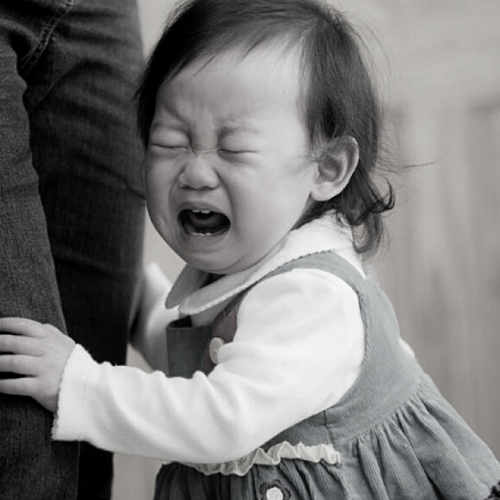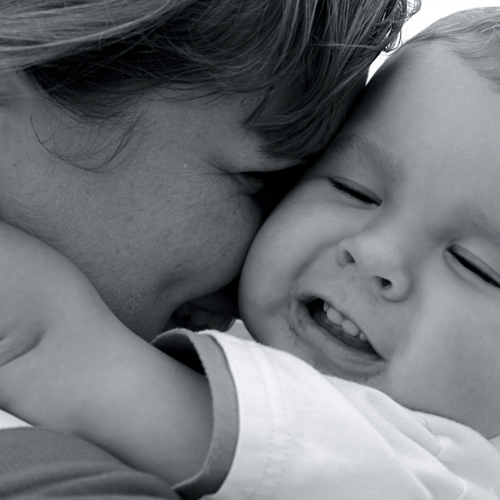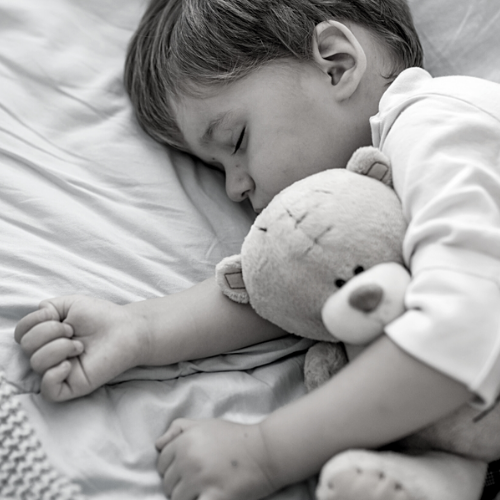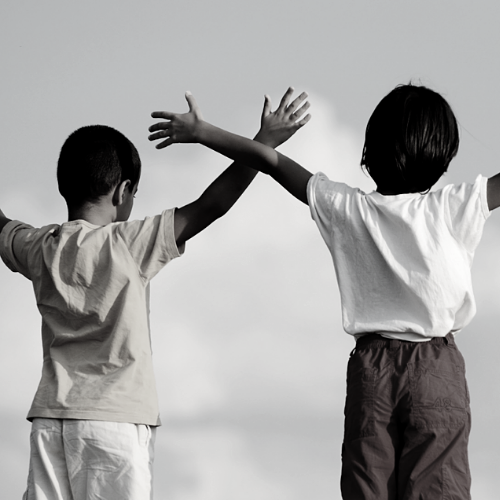‘Don't Leave Me This Way’! Exploring Separation Anxiety
By Lizzie Noble
The intensity of this past 16 months, with which we have had to parent and for some of you beginning a new parenting journey in a pandemic, has brought many challenges and differences. Some of our little ones won’t have had the opportunities for socialisation, spending time outside of the family bubble, attending classes or settings as they would have before.
It is a very strange time which has likely heightened separation anxiety for both parent and child. As the world begins to open up again it is also a time when our little ones might be starting childcare, nursery, pre-school, school after an intensive last year spent with just you!
They are likely to be experiencing all the feels! Hopefully so much lovely quality family time you have had together too, but also the intensity of lockdowns, fears tears, excitement, tantrums, love, worry and exhaustion to name a few. It might be that your little ones are experiencing a little bit of an attachment battle.
New beginnings and transitions often spark a level of worry for us all, but I think sadly the impact of recent events has also heightened that for our children and for us. This can then erupt alongside the big volcanic emotional development ride we all know and love called separation anxiety! ,

For some reason I can’t get the song lyrics ‘don’t leave me this way’ out of my head when I think of separation anxiety. Tiny hands grappling with our legs as we try to edge out of the door at drop off, little monkey arms gripping our necks as we say goodbye to head off to work. Tears and tantrums at any moment that requires a small amount of distance! During these intense periods you can pretty much say goodbye to going to the loo undisturbed too! Not forgetting bedtime- oh bedtime; which may have been going along so smoothly, you begin to feel so relaxed as you have conquered the night-time wakes and endless bedtime battles, only out of nowhere for them to suddenly erupt at full force if you gently try to even consider moving away at bedtime!
It is all so exhausting, it’s quite chaotic, it feels totally helpless. But you are not alone, we are all in it! Or have been in it at some point. If you have a little one who is say 8-12 months, 18-20 months or 3 years I really empathise, as you might be really hitting the key clingy stage! But let’s be honest any little or big one up to the age of at least 5 if not more; can experience separation anxiety quite fiercely.

What Is Separation Anxiety?
So, what is it really, we talk about it, we can describe it, we can experience it, we can feel it, and we may hear people talking about it at parenting groups, nursery drop off and social media! But really WHAT IS IT?
Well, we have the amazing work of John Bowlby (1969) and his pioneering work on attachment theory to thank for helping us to understand this amazing human connection. Basically, attachment theory is the cornerstone of human emotional development. How we inter-relate and how we process and experience our very first relationships. These earliest connections and relationships literally impact on every other relationship to come. It sets the ground work for solid and secure loving connections. Attachment behaviour allows the infant to draw others towards them during moments of need or distress, so during a possible fearful separation they will call out for you more (Fonagy et al., 1995). Babies and children who experience a secure attachment relationship can develop a feeling of feeling protected and safe, which in turn allows them to explore their world more confidently (NICE, 2015). So, we have to allow them this opportunity to separate; but in a way which ensures they can understand that we will return and circle back to them. This is known as the circle of security (2019, The Circle of Security)
It is a wonderous thing and despite its very tough exterior; it is all soft and squishy in the middle and it really is the reason our little ones cannot let us go! How they can look so deeply into our eyes, they are literally absorbing all of us in their senses, the sight, smell, touch and taste of us and its pretty incredible.
Is Separation Anxiety a bad sign?
Separation anxiety demonstrates that your child has formed a healthy, loving attachment to you and that she feels happiest and well cared for, secure and safe when they are with you and so they need to demonstrate that especially at times when they are feeling most vulnerable and unsure. They hit at key times, when children’s brains are developing at a rapid rate and things like darkness, noise, strangers and the unknown all start to become real fears. Everything is uncertain and everything has the potential to be super scary and anxiety provoking, especially now as they haven’t had as many worldly experiences. They respond to this by clinging closer, burrowing into you for safety and it can take time. It’s really hard for you all, but leaning into the separation; expecting the tears and upset to flow can help overcome those feelings and enable the much-needed release of emotion. Hopefully next time won’t feel so bad and so on if we can really support them through it, in that moment in safe repair.
When Will It Pass?
Children will naturally grow out of separation anxiety but there are ways to support them to feel more secure and fill up their ‘love tanks’. A child’s love tank needs filling up and refuelling (Chapman & Campbell, 2016). So when a child’s love tank gets low, you might see that they can experience some tantrums, some unregulated behaviour, some crying, some fussiness, some extreme behaviours and really, they just need that connection with you back. They are saying ‘I need you; I am here, I need you and I can’t reach you and I can’t control how I feel, please come to me!’ You can so easily top it up for them and you do it so instinctively with eye contact, your voice, touch and regulation from feeding, cuddling, comforting, singing, holding space for their feelings.
You cannot spoil a child by loving them, comforting them and being with them when they need you. Trying to create healthy independence in our children, comes from first creating dependence. That is the key to everything in the first attachment relationship, which once secure can then transcend to the secondary attachment relationship and so on and that is how we grow emotionally.
How Can I Help?
So how do we help them to reduce the fear that can be caused by the separation? Children will naturally grow out of this development phase, but when it is really heightened there are little things you can do to help. When you are at home together, practice with quick, safe separations, so they come to understand you go and you return. So, play peek-a boo & hide the favourite toy games and hide and seek games and make it fun. Introduce a comforter, if they haven’t already got one. They are so important for giving children comfort and reassurance and the extension of that attachment relationship. They can be worn to bed by you for a few nights to give them the scent of you. If it something soft and comforting then this promotes touch, touch promotes oxytocin, the love hormone! Which helps to calm the nervous system down. Touch is so important to help your child and if they can’t cuddle you in that moment, they have their comforter at least. And NO we are not creating bad habits! We are creating healthy, secure attachments.

Please say goodbye!!
When you leave them at the childminders, nursery, grandparents, friends, then say goodbye. Prepare them that you are going and that you will return. This can be really hard especially at the height of anxiety! But they need to trust you, that you will return and if you ever sneak out, they won’t be able to build up that trust and this will reinforce the anxiety further. Always leave with a positive smile, even if your heart is breaking as they are untangled off your neck or prized from your leg, but just smile show them you are ok, if you are ok, then they will be ok, ‘if you trust this, then I trust it’, so they can build up positive associations of leaving you.
It’s not easy, but it’s all normal and healthy child development. It gets better, I know I’ve experienced it all, but now I have a very confident, secure 7-year-old, who doesn’t need me nearly half as much anymore, and I can tell you she was the queen of the clingy shy phase for years; and I am so so proud but so so sad at the same time; as they are not lying when they say it doesn’t last forever ……….

References.
Bowlby, J. 1969, Attachment and Loss. New York. Basic Books.
Chapman, G., Campbell, R., 2016. The 5 Love Languages of Children. Northfield Publishing. Chicago.
Fonagy P, Steele M, Steele H, Leigh T, Kennedy R, Mattoon G, et al. The predictive validity of Mary Main’s Adult Attachment Interview: a psychoanalytic and developmental perspective on the transgenerational transmission of attachment and borderline states. In: Goldberg S, Muir R, Kerr J, editors. Attachment Theory: Social, Developmental and Clinical Perspectives. Hillsdale, NJ: The Analytic Press; 1995.
NICE Guidelines, 2015; Children’s Attachment: Attachment in Children and Young People Who Are Adopted from Care, in Care or at High Risk of Going into Care. No. 26. National Collaborating Centre for Mental Health (UK). London: National Institute for Health and Care Excellence (UK); 2015 Nov.
The Circle of Security (2019, https://www.circleofsecurityinternational.com/circle-of-security-model/what-is-the-circle-of-security/)
